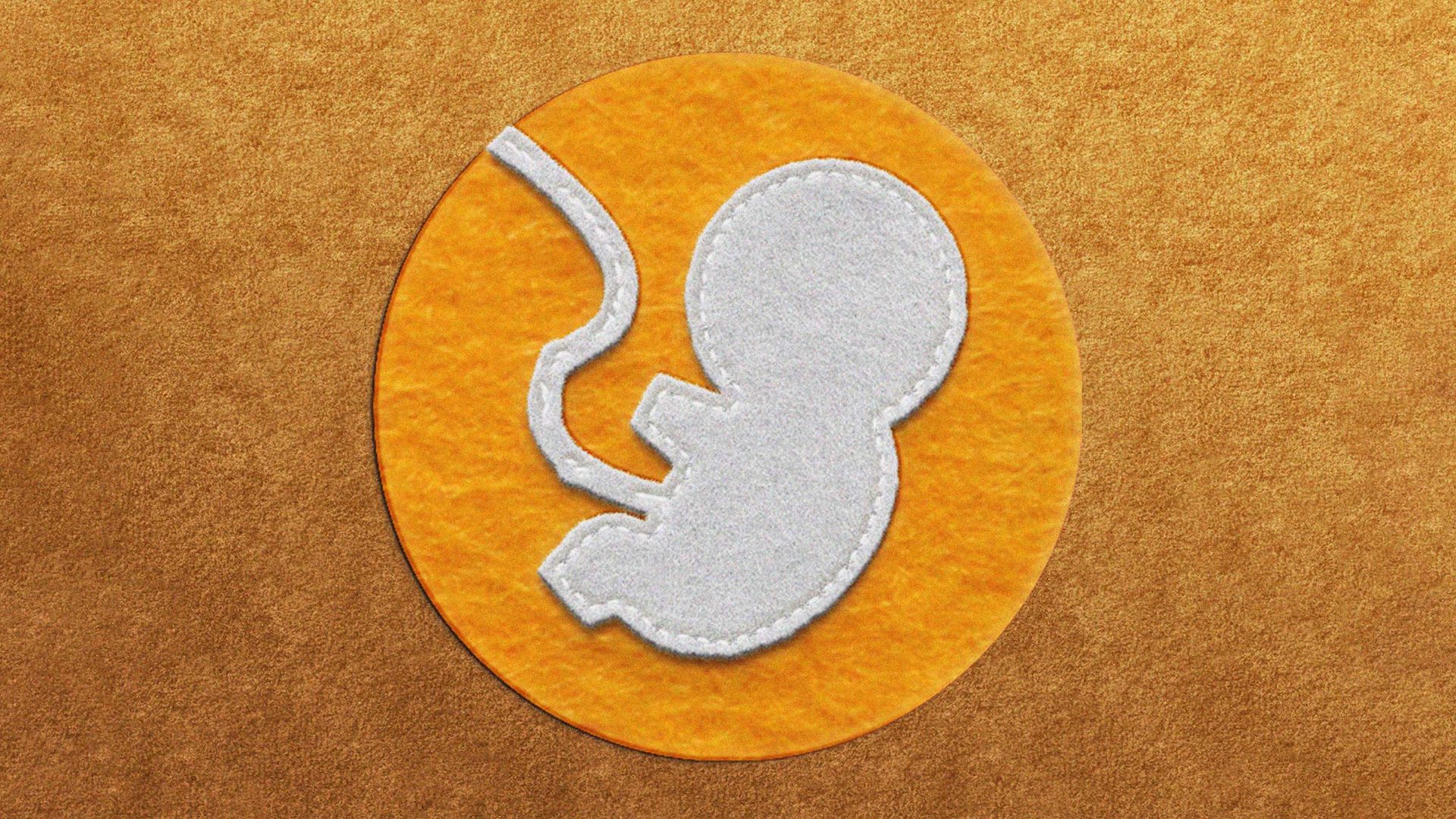A room filled with rows of small tanks of fluid, each supporting a growing human foetus. It’s a dystopia that has been imagined by many a feminist thinker, though it’s one that’s always been constrained to the realms of science fiction. But last week, a Chinese scientist’s claim to be developing the world’s first “pregnancy robot” went viral.
I was immediately sceptical: while there’s a lot of mainstream scientific research happening on the use of artificial wombs to support babies born very prematurely, it’s a technology that has so far only been tested on lambs. And the American scientists behind these developments say substituting artificial wombs for women altogether is as yet unlikely, because a machine that could artificially mimic the chemical interactions between mother and baby in order to gestate a foetus with no human involvement at all is still a long way off.
Sure enough, digging a little deeper, the claims by the Chinese scientist in question seem suspect – including his claim to have a PhD from Nanyang Technological University in Singapore – though this did not stop many news outlets, including in the UK, from amplifying the suggestion that a prototype might be available for sale next year. It’s a salutary reminder of the risks of privileging scientifically implausible clickbait over basic checks of the veracity of some pretty far-fetched assertions.
But the idea of artificial wombs remains an important thought experiment that has significant consequences for the way we regulate existing reproductive practices. The boom in IVF over the last 40 or so years – which enables embryos to be created outside of the human body, then implanted into a woman, not necessarily the biological mother – has paved the way for gestational surrogacy, in which couples or single parents arrange for embryos to be implanted into a woman who carries their child to term for them, handing them over at birth.
Artificial wombs might be seen as the next fertility frontier, eliminating the need for a surrogate mother altogether. But flipping that on its head, our gut reactions to the idea of a robot gestator reveal important ethical considerations in relation to the way surrogacy is practised in the here and now.
Some philosophers, like the feminist Shulamith Firestone, have argued that women will only truly be liberated when artificial wombs make pregnancy optional. But it’s safe to say that remains something of a minority view: one recent survey found only one in five people think this would be a positive development, and that women were more hostile to it than men.
My own reaction to the prospect is one of revulsion. And there is an established strand of feminist philosophy that takes exactly the opposite view of Firestone: Andrea Dworkin argues that by eliminating women’s role in gestation, the development of artificial wombs will only intensify their patriarchal oppression as it undermines the way men perceive women’s utility in sexist societies.
It’s useful to interrogate these instincts further in relation to the morality of surrogacy.
Surrogacy is most commonly opposed by feminists and others on the grounds that it involves the exploitation of women’s bodies, particularly in the small number of countries where commercial surrogacy is legal, and so commissioning parents can pay women to carry and birth babies for them.
Suggested Reading


Sandie Peggie and the dangers of gender groupthink
It very often involves poor women with few other financial options – who have sometimes been coerced into it by their husbands or families – taking significant risks with their own health (gestational surrogacy pregnancies are even higher-risk than standard pregnancies) in order to enable wealthy people who could not otherwise have their own biological children.
There are doubtless a few women for whom surrogacy is an emotionally and financially empowering experience, but the practice as a whole is net exploitative and should not be treated either socially or legally as just another reproductive technology akin to something like IVF.
But our societal distaste for artificial wombs is a product of the fact that the ethical issues with surrogacy don’t stop with the exploitation of women’s bodies; indeed, artificial wombs can eliminate that altogether. Beyond this, there is something grim about the prospect of turning gestation into a mechanical, artificial process, because as any woman who has carried a baby will know, gestation is much more than a biological exchange of fluid between carrier and foetus: it is an emotional relationship between mother and baby-to-be, particularly in the later stages of pregnancy.
Research shows that babies recognise and respond to their mother’s voice at about 24 weeks in the womb; they move around less and their heartbeat slows. Mothers are advised to talk and sing to their baby to promote early bonding. The idea of replacing that relational bond with a machine is quite chilling.
And if we properly value that relationship – as I think we ought to – that raises real questions about a different ethical aspect of surrogacy, about whether it is right to conceive a baby with the express intention of separating that child from its birth mother. I suspect many would find the idea of doing this if the separation happened a few weeks after birth abhorrent. Is it really so different to do this at the moment of birth, given the relationship that already exists?
So even if the reality of artificial wombs remains some way off, as a concept they help us think about the role that science and the law should play in assisting people who would not otherwise be able to have children. The human urge to reproduce is a strong one; many people feel that having children is a key element of living a fulfilled life. The ethical default, therefore, is that anything that allows more people to do this is a good thing; this is what is driving the campaign to liberalise surrogacy laws in the UK, where surrogacy is tolerated, but not actively encouraged (and commercial surrogacy involving payment as opposed to expenses is outlawed altogether).
But the danger is that we lose sight of the ethical minefield generated by technologies like IVF and, one day, artificial wombs. Science is very likely to outpace the speed at which we’re able to develop the global regulatory systems and agreements to limit future technologies like artificial gestation and embryo selection for characteristics such as intelligence and neurodiversity; technologies that individuals will want to avail themselves of, but which could potentially have dark and unforeseen consequences for us as a society.




